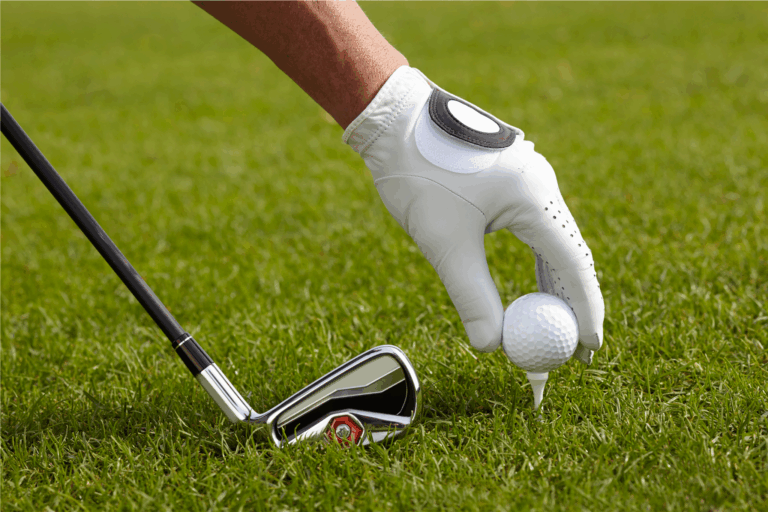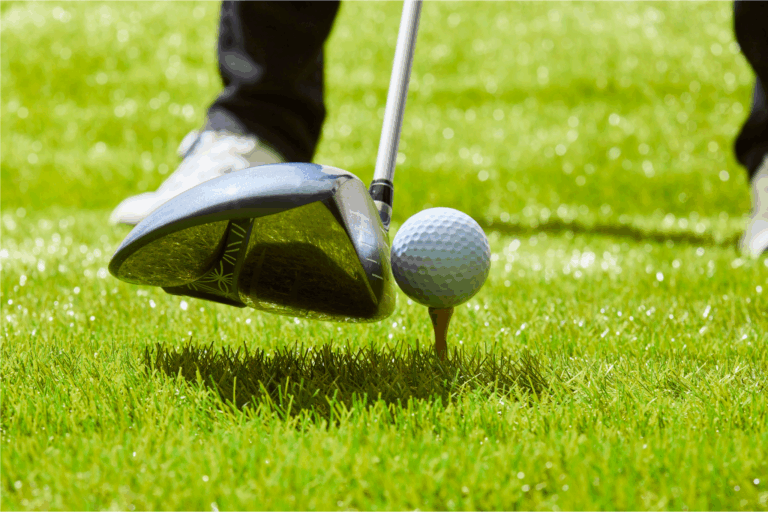How to Stop Topping Fairway Woods for Solid Contact
Stay Tuned with Latest Updates.
BY Adam Bazalgette
Posted On September 8, 2025
Many golfers love the idea of reaching a par five in two, but frustration sets in when their fairway woods are topped and the ball skids across the grass instead of flying high and long. Topping happens far more often than most players realize, and while it may look like a simple mistake, there are clear mechanical reasons behind it.
In this blog, we’ll explore why golfers top their woods, the most common causes, and the exact adjustments you can make to achieve cleaner, more consistent strikes.
Why Do Golfers Top Their Fairway Woods?
Topping the ball usually comes down to two issues:
- The swing arc starts moving upward before impact.
- The radius of the swing shortens because the arms bend toward the body.
Both of these problems often stem from steep angles of attack or trying to swing too hard from the top. Since fairway woods are long-shafted and have less loft, even small swing errors are magnified. Unlike a driver, there’s no tee to lift the ball, which makes good mechanics even more important.
Common Mistakes That Lead to Topping
- Steep swing plane: A steep angle forces the club down into the ground, causing your body to pull up and “bail out” before impact.
- Over-acceleration from the top: Rushing the downswing causes the club to outrun the body, pulling the circle upward too soon.
- Bent arms at impact: Losing extension narrows the swing arc, making it almost impossible to catch the ball cleanly.
Practicing with awareness of your golf swing mechanics is essential to correcting these habits.
Drills to Eliminate Topping Fairway Woods
Here are simple ways to retrain your motion:
- Weight Shift Drill: Take small swings without a ball, focusing on moving your weight to the lead side. Let the club skid the ground slightly after the ball position. This helps promote solid contact.
- Brush the Grass Drill: Imagine brushing the grass under the ball rather than chopping down or lifting up. This feel keeps the swing shallower while still compressing the ball.
- Slow Motion Practice: Practice swings at half-speed, focusing on balance, body rotation, and timing. This builds rhythm and prevents over-acceleration.
To see this movement in real action, study wrist action during golf swing for better sequencing.
Equipment and Setup Adjustments
Sometimes it’s not just your swing but also your setup:
- Ball too far forward? You’ll bottom out too early.
- Standing too upright? You’ll lose extension and bend your arms.
- Gripping too tightly? You’ll restrict wrist mobility.
- Centered Pivot Drill – Stand slightly more forward, keep your weight centered, and pivot around your spine without excessive tilt.
- Soft Wrist Drill – Make slow practice swings without a ball, focusing on letting your wrists react naturally instead of forcing them.
- Stork Drill – Place your back foot behind you to limit over-rotation. Swing with shorter arms and feel the clubhead release naturally.
Simple checks like ball position and posture can make your scratch golfing practice sessions more effective.
Building Efficiency in the Downswing
Justin Rose shows how the downswing should look: a small hip bump to the left, stable head position, and gradual release of energy through the club. Nick, on the other hand, thrusts too much with his chest, loses his angle, and has to stand up to avoid hitting behind the ball.
The takeaway? If you want more power and consistency, you need to store energy in the backswing and release it through the wrists—not burn it all early with your body.
Bringing It All Together
Topping your fairway woods doesn’t mean you lack ability. It usually means your swing arc, weight shift, or sequencing needs attention. Focus on these fundamentals, practice the drills above, and you’ll quickly find your woods flying higher and farther with better consistency.
If you want structured training designed for players of all levels, you can create your account and start your FREE 14-day trial at Scratch Golf Academy.
Golf improvement takes patience, but with the right mechanics, you’ll replace those frustrating topped shots with long, solid strikes.
“I’ve been a Scratch Golf Academy member for 5 months and in that time I’ve lowered my handicap from a 25 all the way down to a 16. It’s a great program, and if anyone is thinking about trying it, I highly recommend it!”
-Fred Fowler
Create Your FREE 14-Day Account and start shooting lower scores today.
Recent Articles
-
How to Control Your Golf Swing for Consistency
Master your golf swing for consistent shots. Focus on swing plane, pivot, and controlled energy transfer. Practice drills like the one-hand orbit to improve rhythm, accuracy, and distance.
-
Fix Your Knee Movement & Pivot in the Golf Swing
Struggling with flipping your golf club at impact? Discover proven techniques to fix your swing, boost power, and achieve consistent, solid golf shots effortlessly.
-
How To Stop Flipping Golf Club at Impact
Struggling with flipping your golf club at impact? Discover proven techniques to fix your swing, boost power, and achieve consistent, solid golf shots effortlessly.
-
2 Key Downswing Moves for Power & Consistency
Adam Bazalgette reveals two essential downswing moves-proper weight shift and narrowing the swing arc-that help golfers strike the ball cleaner, add power, and improve swing consistency.
-
Top Golf Drills to Improve Ball Striking Consistency
Adam Bazalgette shares drills to help golfers strike the ball consistently, control the clubface, manage low point, & develop a repeatable, reliable swing for better distance & accuracy.
-
How to Square the Clubface & Master Golf Release
Adam Bazalgette explains how to square the clubface, master golf release, and use the Stop-and-Snap Drill. Learn pro tips to hit straighter, more consistent, and powerful shots.










